By Ben Reynolds
The American Rescue Plan Act of 2021 includes $350 billion in new funding for state, local, territorial and tribal governments through the Coronavirus State and Local Fiscal Recovery Fund. Also included in that fund is $195 billion distributed to state governments and the District of Columbia. While there are some restrictions on the use of funds, states maintain considerable discretion. Allocation data was collected from state actions, enacted legislation and mandatory State Recovery Plan Performance Reports. The Council of State Governments ARPA Utilization Database includes information through December 2021.
This is the first in a series of analyses on how states are using the State and Local Fiscal Recovery Fund. This article examines how much of each state’s share has been allocated. The next article will analyze the various categories and policy areas in which states have invested.
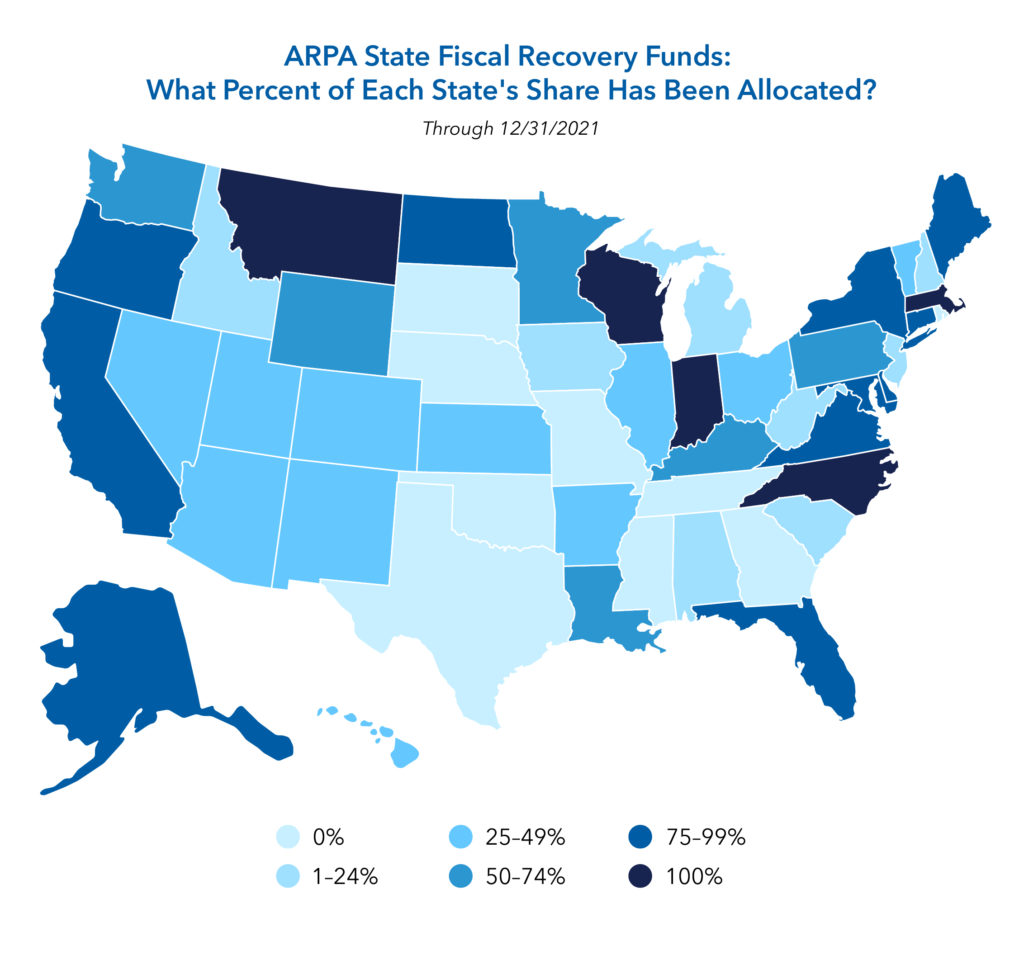
States are not required to allocate any fiscal recovery funds until 2024. However, by the end of December of 2021, a little over 53% of the fund had been allocated by the states; and five states (Indiana, Massachusetts, MoStates are not required to allocate any fiscal recovery funds until 2024. However, by the end of December 2021, a little over 53% of the fund had been allocated by the states; and five states (Indiana, Massachusetts, Montana, North Carolina and Wisconsin) had allocated all their funds. Nine states had not allocated any funds and eight states had allocated less than 25% of their share.
When reviewing states in the four geographic regions identified by The Council of State Governments, the states iWhen reviewing states in the four geographic regions identified by The Council of State Governments, the states in the Eastern and Western regions have allocated the most funds (both 73.1%) while states in the Midwest region have allocated 39.2% and states in the South region have allocated 31.5%.
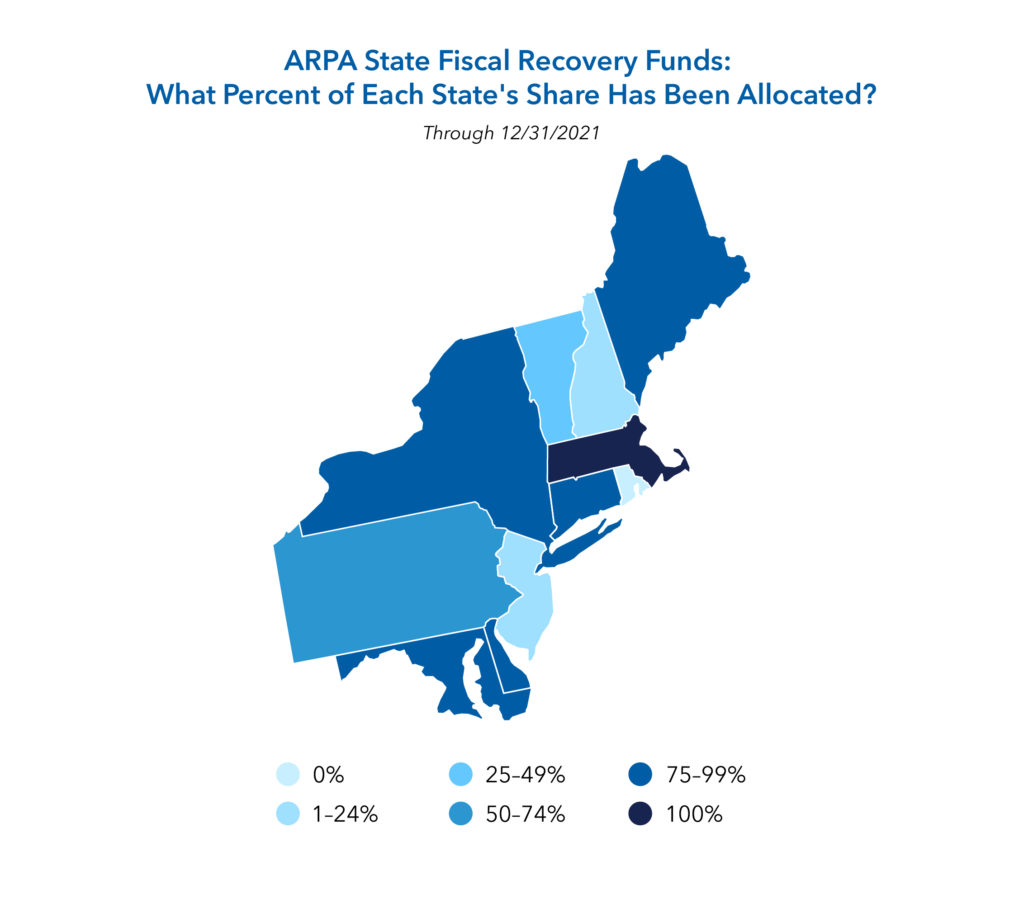
Through December 2021, states in the Eastern region received around $43 billion in fiscal recovery funds (about 22% of all fiscal recovery funds). New York received $12 billion in fiscal recovery funds, the most in the region. Delaware received the least amount ($924 million).
- Massachusetts is the only state in the region to allocate 100% of its funds.
- Connecticut, Delaware, Maine, Maryland and New York had allocated over 75% of their fiscal recovery funds.
- New Hampshire and New Jersey had allocated less than 25% of their funds.
- Rhode Island is the only state in the region to have not allocated any fiscal recovery funds.
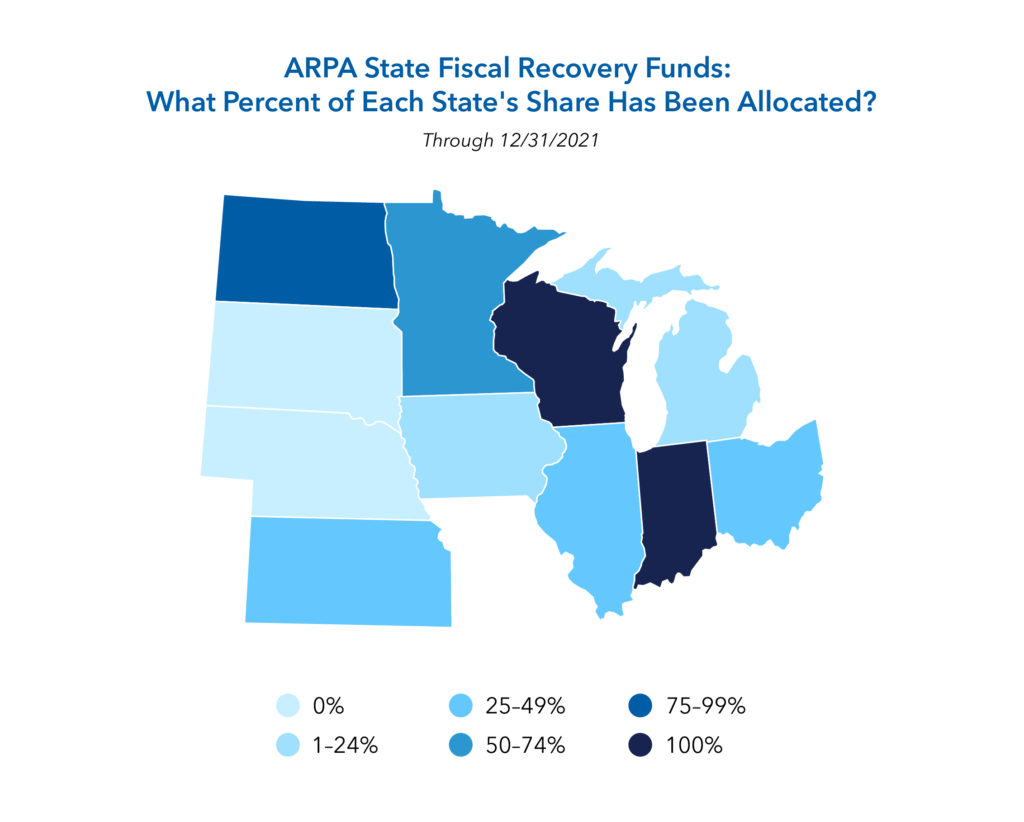
In the Midwest, 39% of the region’s fiscal recovery funds have been allocated. Illinois received $8 billion in funds, the most in the Midwest, while South Dakota received the least amount of funding ($974 million).
- Indiana and Wisconsin have fully completed their allocations.
- Nebraska and South Dakota have not allocated any of their fiscal recovery funds.
- Only two other states in the Midwest have allocated over 50% of their funds (Minnesota and North Dakota).
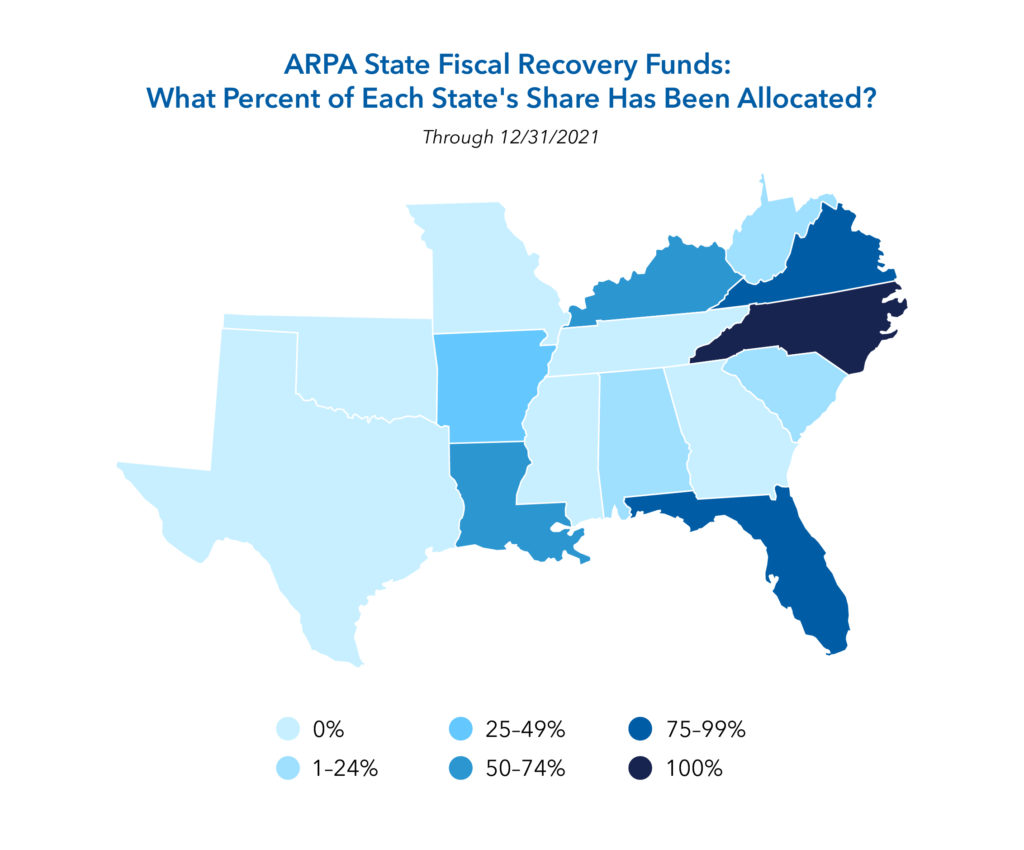
As of December 2021, the states in the Southern region had allocated the lowest percentage of fiscal recovery funds (31%), but had received the most in total funding. Texas received the most funding ($15 billion) in the region while West Virginia received the least ($1 billion).
- North Carolina is the only one state that allocated 100% of its funds.
- Georgia, Mississippi, Missouri, Oklahoma, Tennessee and Texas had not allocated any funds.
- Florida, Kentucky, Louisiana and Virginia had allocated over 50% of their funds.
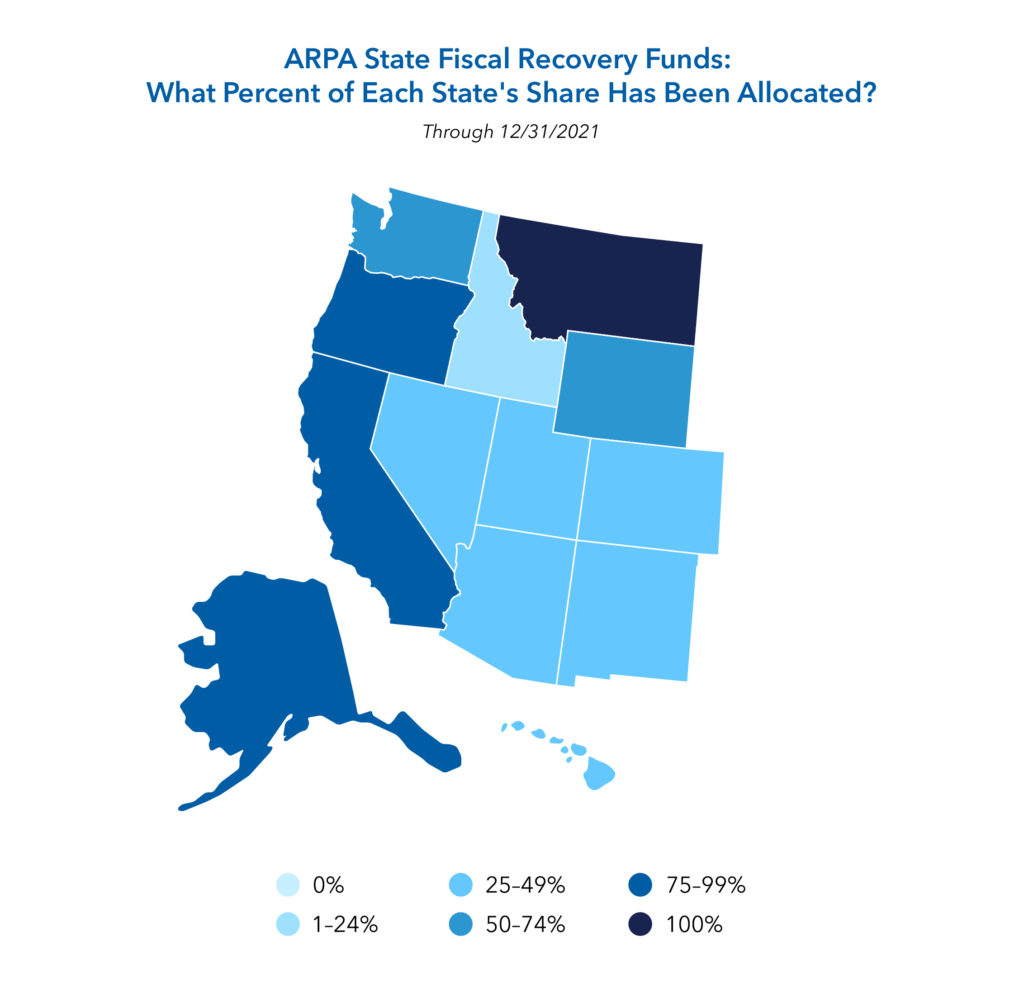
Every state in the West allocated some amount of its State and Local Fiscal Recovery funds. California received the most funding ($27 billion) in the west while Montana received the least ($906 million).
- Montana is the only state to fully allocate its fiscal recovery funds.
- Idaho had allocated the least amount of its funds (4.6%).
- Alaska, California, Oregon and Wyoming allocated over 50% of their funds while six other states had allocated less than 50% of their funds.